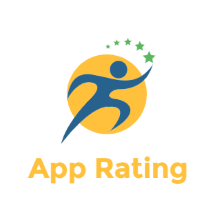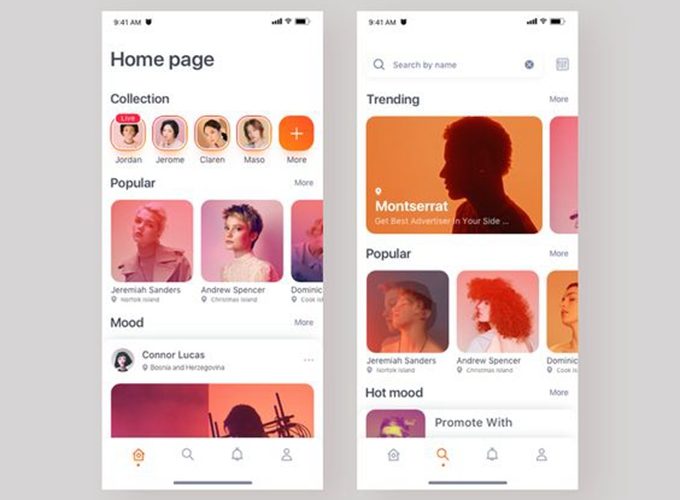Keep in mind the Flappy Fowl recreation app? Though short-lived, when it peaked, its creator, Dong Nguyen, used to earn round US$50,000 per day from in-game promoting alone.
Table of Content
Nevertheless, inside just a few weeks, Nguyen determined to withdraw the app from the app shops. The Flappy Fowl followers had been closely disenchanted, and lots of listed their smartphones put in with the sport on eBay.
Quickly after its demise, the app shops had been flooded with clones (and nonetheless are). If you happen to had been Flappy Fowl’s creator and determined to trademark the app, not one of the cellular app builders may have cloned your creation with out going through unfavourable authorized repercussions, or not to mention monetized it.
By registering a trademark, you may safe your app and eradicate the circumstances of another person profiting out of your creation.
In definition, a trademark is a phrase, image, phrase, or design that distinguishes or identifies the supply of services or products of 1 entity from these of others. This implies logos assist in assuring clients {that a} specific product (or service) can solely come from you and nobody else.
In an easier sense, a trademark is a model. It helps clients to tell apart your merchandise (or companies) from opponents. So whereas shopping for a product, clients would possibly establish an organization’s trademark (model title and brand) and purchase its product on account of previous experiences.
Within the context of cellular functions, parts comparable to logos, slogans, model names, and app UI design parts and sounds come below trademarking.
However suppose you’re creating an enterprise cellular app (with the essential options) that lets an organization observe their workers’ attendance and efficiency. In that case, there aren’t many elements that may very well be trademarked, and so, it is probably not definitely worth the problem.
We’ll focus on extra on whether or not it is best to trademark an app or not in a bit.
Copyright vs Trademark vs Patent: How Are They Totally different?
Trademark is a form of mental property rights (IP rights). If you happen to’re an app developer, together with trademark, you additionally have to know in regards to the different two forms of IP rights – copyright and patent.
Every sort of IP proper protects completely different points of your enterprise, and on this case, your cellular app. And sure, logos are completely different from copyrights or patents. To make issues clear, let’s check out how they differ and what belongings they defend.
Copyright
Copyright, denoted by the image ©, protects unique inventive and literary works comparable to photographs, music, books, pc software program and flicks. So, should you create an commercial as a part of your app advertising and marketing technique, you may copyright it and restrict anybody else from utilizing it.
Additionally, should you develop an augmented actuality app that lets a person view the Sistine Chapel and the work made by Michelangelo, you may copyright the AR content material and defend your laborious work.
In the US, copyrights are granted by the U.S. Copyright Workplace. The length of safety depends upon the character of copyright.
If the copyright is for the works of a person, safety lasts for the lifetime of the person plus 70 years. Works which are created anonymously, pseudonymously, or by hiring professionals, the safety of copyright lasts for 95 years from the purpose of publication or 120 years from the date of creation – whichever is shorter.
Trademark
A trademark is a type of branding used on items and companies. As beforehand talked about, a trademark allows you to defend:
- Phrases (Model names)
- Phrases (Slogans)
- Image (App icon design)
- UI/UX design parts
- Sounds
In the US, logos are granted by the United States Patent and Trademark Workplace (USPTO).
Not like copyrights or patents, logos don’t expire after a predefined variety of years. So long as you pay the charges at common intervals and file the upkeep paperwork, the trademark registration can final ceaselessly.
You’ll be able to trademark app title and its icon to verify nobody else makes use of it. Additionally, in contrast to copyright, trademark infringement doesn’t require somebody to repeat the UI/UX design aspect on to trigger the infringement.
As a substitute, it turns into an infringement if somebody designs a component that’s related sufficient to trigger confusion on account of similarity – that means, logos will assist in defending your app elements from cloning (like within the Flappy Fowl occasion) or even when somebody makes use of an app title or brand much like your app that may trigger confusion (on account of similarities) to the person.
Patent
A patent typically protects innovations. It’s an unique proper awarded to inventors of a product or course of by the federal government – giving the inventor authorized powers to sue anybody who makes use of, copies, or sells their invention, with out their consent, for a sure variety of years.
In the US, patents are granted by the United States Patent and Trademark Workplace (USPTO).
In line with the legal guidelines of the US authorities, a patent can final for as much as 20 years from the date of submitting. Merchandise or processes providing a brand new technical resolution to an issue or symbolize a novel methodology of doing one thing is patentable. Additionally, patents comply with a first-to-file system and never a first-to-invent system.
If you happen to’d prefer to know extra about patenting your app and whether or not it’s price doing so, try our information on the right way to patent an app.
Among the best examples of patent wars within the smartphone realm is between Apple and Samsung. The patent infringement case that was most mentioned was relating to the “Slide to unlock” characteristic – which was patented by Apple.
In line with Samsung – who was accused of copying the person interface property “Slide to unlock” and another patented options from Apple – the patented options had been “too apparent” and so, needn’t be patented.
Despite the fact that the preliminary demand made by Apple for the infringement was US$2.2 billion, the case took just a few years to be solved and was lastly settled at $US120 million.
Curiously, Apple’s “Slide to unlock” patent was invalidated by the German courtroom in 2013 when the US tech large went in opposition to Motorola. In line with the courtroom, Apple’s patent was considerably “irrelevant” as quite a few producers have already carried out the unlock performance with related design workarounds.
Why Trademark Apps?
1. It Protects You From Trademark Trolling
Some people, generally known as trademark trolls, have the behavior of registering logos and never publicly disclosing it to demand compensation or declare damages when somebody makes use of it. To be sure you don’t fall prey for such frauds, trademarking app names and logos is extremely beneficial.
Even should you had been the primary individual to make use of a reputation and forgot to trademark it, another person can register it later and sue you for utilizing it.
2. It Offers Customers Extra Assurance to the Customers
Emblems may be thought-about as a element for product high quality assurance. A trademarked app or brand means no different developer (aside from you) can publish apps below the identical banner. This can give extra confidence to customers relating to the standard of an app and provides customers extra causes to check out completely different apps from the identical builders.
3. You Can Use It as a Collateral
Since a trademark is a sort of IP proper, you should utilize it as collateral whereas availing loans.
4. You Can Revenue From It
Suppose you trademark an app and determine to not go additional with it, you may at all times switch the IP rights below a license settlement and revenue from it.

